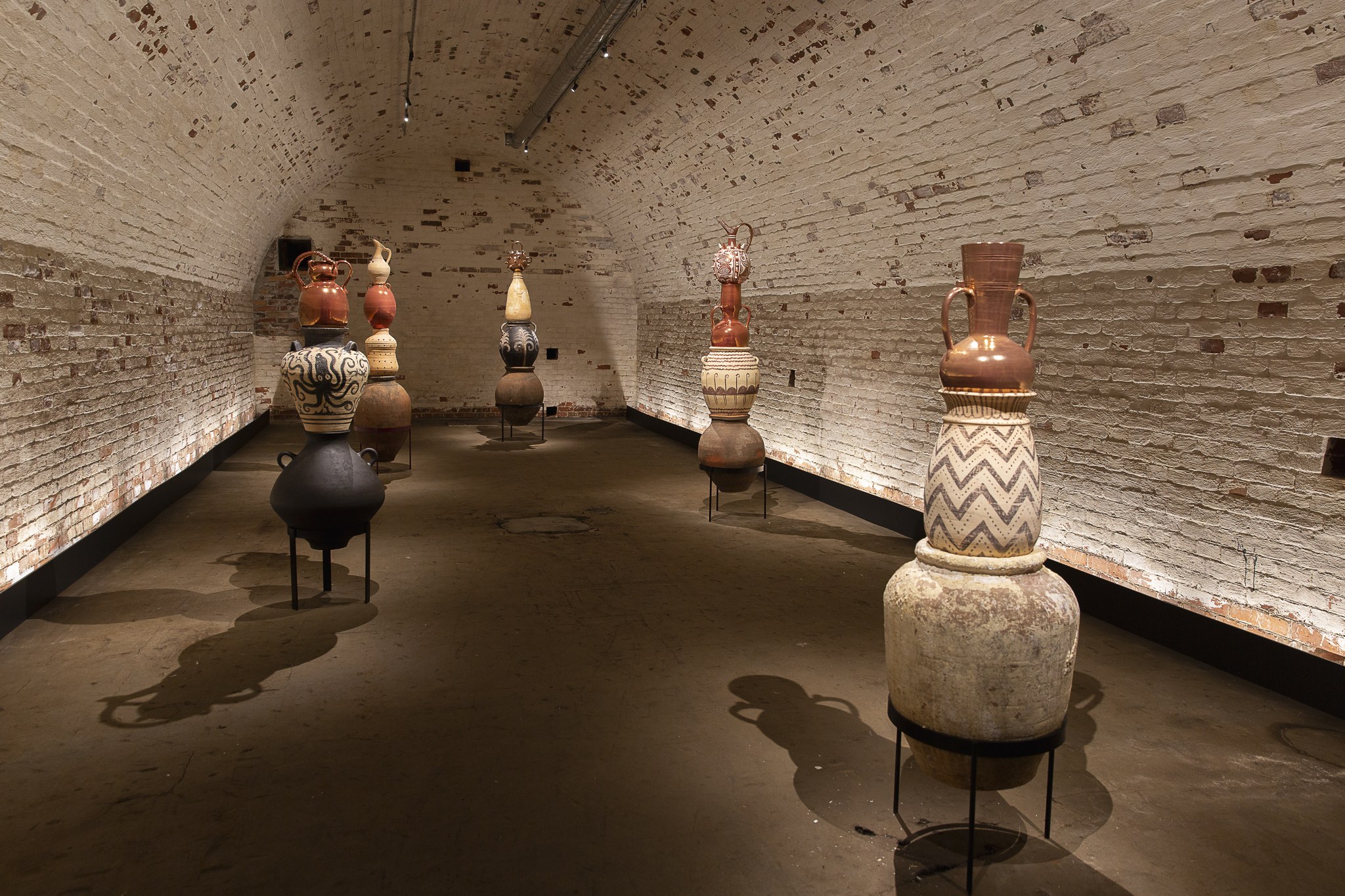Asunción Molinos Gordo is a Spanish researcher and artist strongly influenced by the disciplines of anthropology, sociology, and cultural studies in her questioning of the categories that define ‘innovation’ in mainstream discourses today. Aiming to generate a less urban-centric way of understanding progress, and with a focus on contemporary peasantry, she has produced work reflecting on land usage, nomad architecture, farmers’ strikes, bureaucracy on territory, transformation of rural labour, biotechnology, and global food trade.
For Helsinki Biennial, she created a new edition of ¡Cuánto río allá arriba! (2021), a sculptural ensemble incorporating elements of water pottery, and deploying the gestural potential of assemblage. Molinos Gordo’s work borrows its title from the poem El Cántaro Roto (1958) by Octavio Paz, in which he exclaimed “¡Cuánto río allá arriba!” [How many rivers above!] to question the myth of progress that disguises reality. The work pays tribute to the mindset behind the thousands of uses and forms of water pottery conceived by farming communities and proposes an assemblage of the remains of an ancestral ethical system of cooperation and solidarity that has governed the planet’s resources until recently.
In December 2020, water – a common good and source of life throughout the planet – began trading on the Wall Street stock market. At that time, I was immersed in research on the ways in which water has been shared by the imazighen communities that settled in the latter-day region of Valencia in Spain. Back in the 8th century, peasant Berber families from different part of North Africa built a system of irrigation channels, distributing water in an equitable manner to ensure social harmony among the tribes and new settlers.
These social groups created a hydraulic system that was extremely advanced in terms of water justice and social responsibility. To me it was incredible to see the contrast between these two forms of technology. On one hand, the very elaborate and complex contemporary financial markets were privatizing every drop of water very effectively, while on the other, ancient Moorish water technologies specifically sought to avoid conflicts by securing proportional access to all and establishing social peace among the tribes.
I started expanding my research into other water technologies that employ irrigation channels and water pottery. Pitchers, jugs, canteens, basins, rhytons…all are receptacles used for the transport, storage and consumption of water. Loaded with playful customs and symbols, they simulate the idea of abundance, their varied morphologies paying tribute to other forms of life on Earth, reflecting this in two fundamental precepts: the universal right of human beings to quench their thirst and that of their animals, and the right to water their crops.
Asunción Molinos Gordo

Asunción Molinos Gordo: ¡Cuánto río allá arriba!, 2023. © HAM/Helsinki Biennial/Sonja Hyytiäinen
Molinos Gordo’s work has been exhibited at venues including Art Jameel, Dubai, UAE; IVAM, Valencia, Spain; Victoria & Albert Museum (London, UK), Delfina Foundation (London, UK), ARNOLFINI (Bristol, UK), The Townhouse Gallery (Cairo, EG), Darat Al Funun (Amman, JO), Tranzit (Prague, CZ), Cappadox Festival (Uchisar-Turkey), The Finnish Museum of Photography (Helsinki, FI), Museo Carrillo Gil (Mexico), MAZ Museo de Arte de Zapopan (Guadalajara, MX), MUSAC (León, ES), CA2M (Madrid, ES), CAB (Burgos, ES), Matadero (Madrid, ES) and La Casa Encendida (Madrid, ES), among others.
Asunción Molinos Gordo
¡Cuánto río allá arriba!
2023
sculptural work (pottery assemblage)
Potters:
Arturo Mora Reflejo Metalico, Manises
Juan Carlos Iñesta, Domanises, Manises
Ana Pales, Cerámicas Tevisan, Manises
Courtesy of the artist.